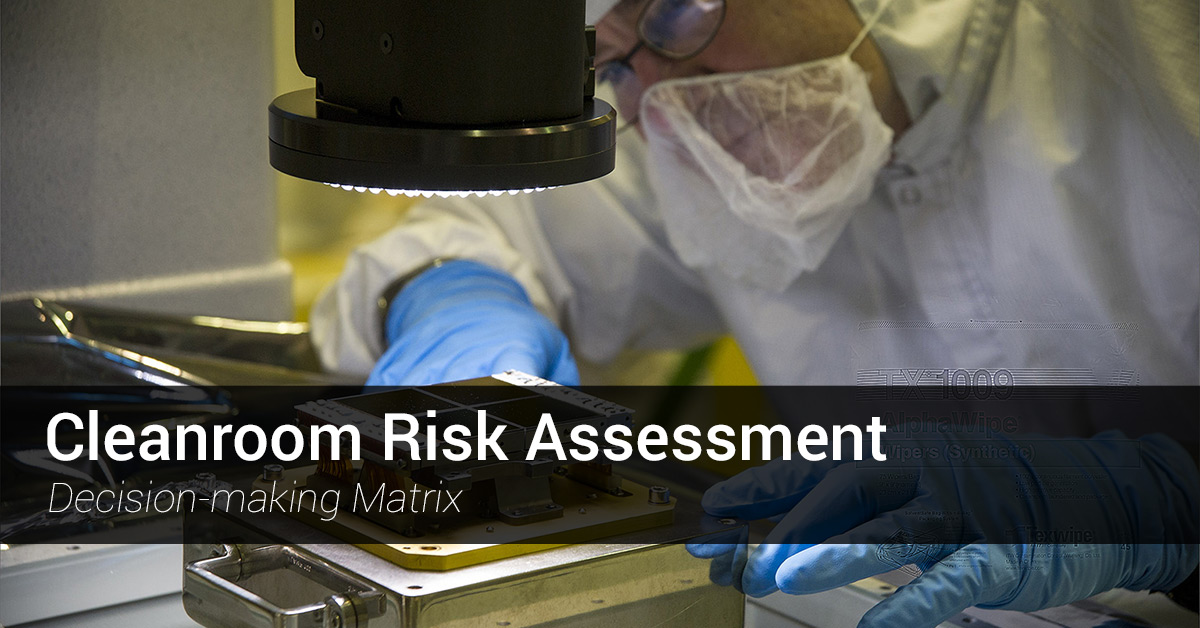A cleanroom risk-assessment matrix (and products you'll love)
Posted by SOS Cleanroom on 21st Dec 2016
 In your cleanroom environment, risk of harm is one of the things you'll constantly have to monitor and assess, and it’s an ongoing battle to identify what all those risks are and keep them to a minimum. While there are a lot of complex calculations that you can make to assign a precise number to each individual risk, in this blog post, we’ll look at a more basic-level understanding of risk.
In your cleanroom environment, risk of harm is one of the things you'll constantly have to monitor and assess, and it’s an ongoing battle to identify what all those risks are and keep them to a minimum. While there are a lot of complex calculations that you can make to assign a precise number to each individual risk, in this blog post, we’ll look at a more basic-level understanding of risk.
Definition of risk
The ISO 14644-6 defines risk as "the combination of the probability of the occurrence of harm and the severity of that harm."
Definition of harm
In his book, Cleanroom Technology (2nd edition), William Whyte defines harm as “the amount of contamination that is transferred from a hazard to the product, where a ‘hazard’ is a source of contamination.”
 Two axes of risk in your cleanroom
Two axes of risk in your cleanroom
Based on the definition of risk that we’ve just seen, we can plot two different axes of risk on an x/y graph. We’ll assign the likelihood of harm occurring to the Y axis and the severity of that harm to the X axis.
While there will be a continuum of points that can fall anywhere in this graph, we can begin to make some generalizations. The lower-left quadrant is where the likelihood of harm occurring is low, and the severity of that harm is also low. This represents an area of low risk.
The top right quadrant represents an area where the likelihood of harm occurring is high, and the severity of that harm is also high. This represents an area of high risk.
The higher the risk, the greater the attention you should pay to mitigating these risks in order to reduce the potential harm that can come to the product. Every individual risk will call for a different strategy, but the more you can reduce the probability or frequency of harm, the less risk you will have.
In just about any cleanroom, a major high-risk item you’ll have on your list is people. It’s no secret that people are one of the biggest sources of cleanroom contamination. From skin cells to saliva to what’s on the bottom of our shoes, we humans sometimes can seem like giant walking particle and microbe machines. However, it’s practically impossible to operate a cleanroom without people (which means that the value that the cleanroom worker’s brainpower brings to the cleanroom vastly outweighs the contamination they bring in with them).
SOS Cleanroom is proud to carry product lines of all the things you’ll need as part of your risk assessment and management plan to keep those high risks from translating into actual harm. Here are some of our favorite products that will be a great addition to the risk mitigation strategy in your cleanroom.
- TX1009 Cleanroom Wipes - Dry wipes allow you to clean the surfaces of your cleanroom with a virtually lint-free and particle wiper.
- Cleanroom Apparel - Contain all those walking particle and microbe generators in your cleanroom with the proper gowns, gloves, and masks.
- Texwipe Cleanroom Swabs - Follow up your risk assessment plan with these cleaning validation swabs.
Thank you for choosing SOS Cleanroom to supply all your cleanroom needs.
